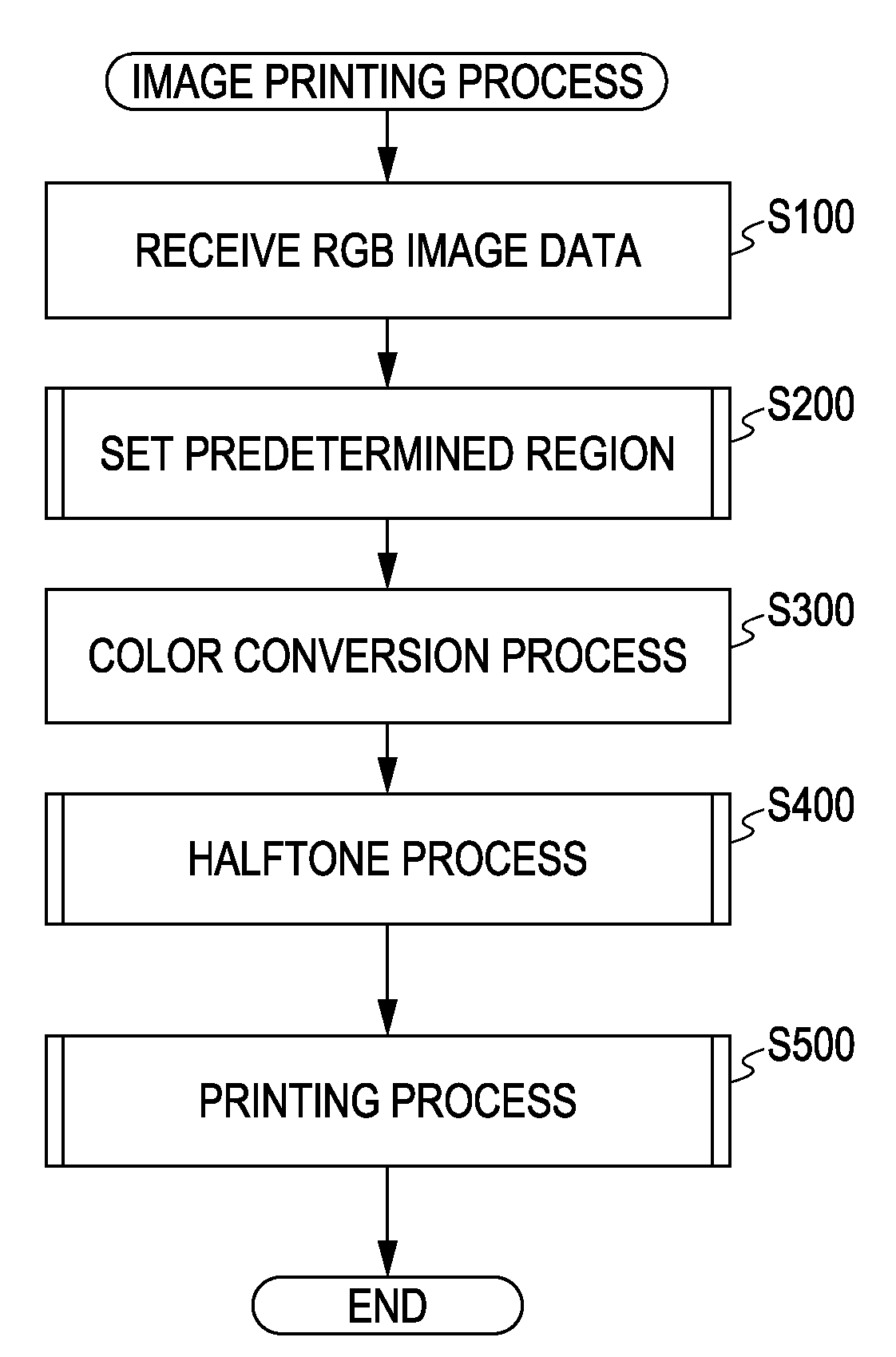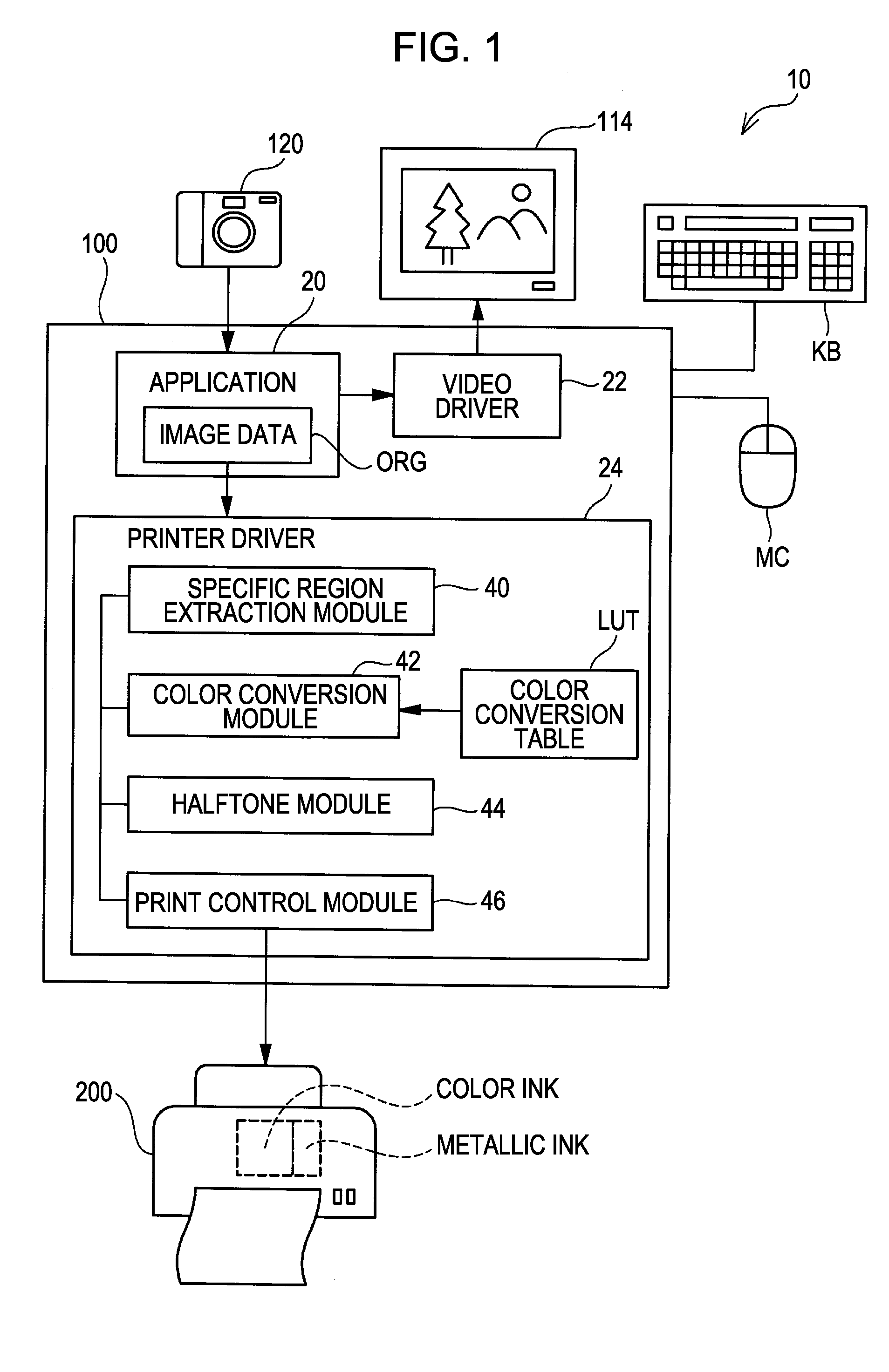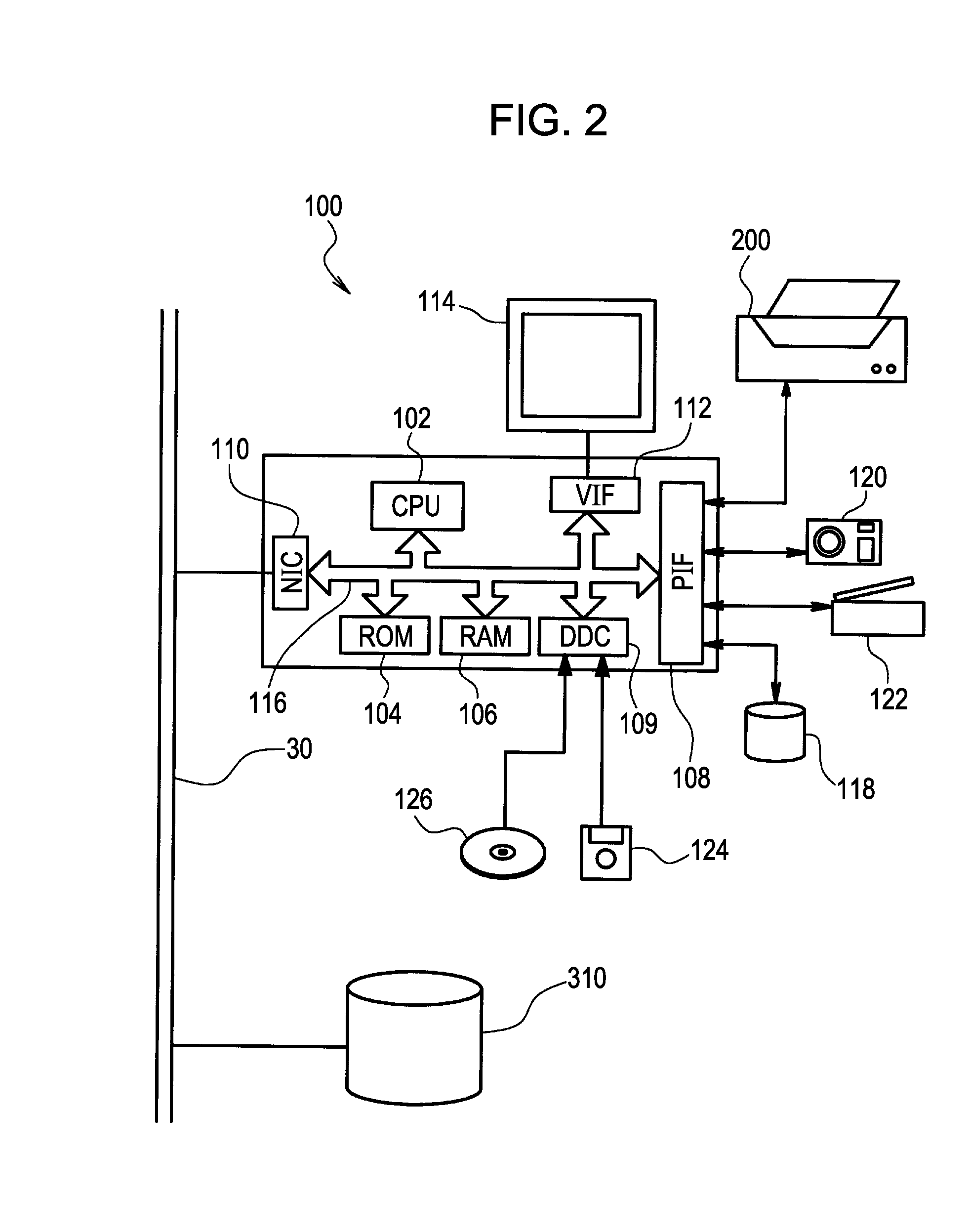Printing Device, Print Control Device, and Printing Method
a printing device and control device technology, applied in printing, other printing apparatus, etc., can solve the problems of dulled image formed by color ink, difficult to sufficiently utilize the characteristics of metallic ink,
- Summary
- Abstract
- Description
- Claims
- Application Information
AI Technical Summary
Benefits of technology
Problems solved by technology
Method used
Image
Examples
first example
C.
(C1) Printing Process of First Example:
[0064]FIG. 4 is a flowchart showing an image printing process according to a first example of the invention. This image printing process is performed by allowing the CPU 102 to execute a prepared program by the printer driver 24 in hardware. When the process of FIG. 4 is started, the printer driver first receives input image data of an RGB format from the application program (step S100). After the image data is received, the printer driver 24 performs a process of setting a predetermined region, in which printing using the metallic ink is performed, using the specific region extraction module 40 (step S200). The predetermined region may be set by various methods, and, among them, for example, as shown in FIG. 5A, a process of extracting a region other than a skin color region and imparting a mark to that region may be used. In the process of extracting the region other than the skin color region, the computer 100 converts a color space of the...
first modified example
(C2)
[0086]Although a combination of FIGS. 7 and 8 is used as the dot recording ratio table in the above-described first example, a table T11 shown in FIG. 12 may be used as the dot recording ratio table used in the region using the metallic ink. In this table T11, with respect to the image data, the recording ratio S of the small dot is 0 and the recording ratio M of the intermediate dot is set such that the intermediate dot is formed from a range in which the image data is small. The recording ratio L of the large dot is set such that the large dot is formed in a range in which the image data is smaller than that of the table T2 shown in FIG. 8 (a range in which a gradation value is low). As a result, in the region using the metallic ink, the small dot is not formed and only the intermediate dot and the large dot are formed. Accordingly, it is possible to further suppress the generation of the dullness of the color ink due to the scattering of the light, compared with the first exa...
second modified example
(C3)
[0087]Although the color ink is ejected on the metallic ink in the first example, as shown in FIG. 13, even in the region using the metallic ink, the color ink may be ejected in the region in which the printing using the metallic ink is not performed. Even in this case, in the region using the metallic ink, the color ink is formed by a relatively large dot such that the scattering of the light is suppressed and the dullness of the color in the region using the metallic ink is suppressed.
PUM
 Login to View More
Login to View More Abstract
Description
Claims
Application Information
 Login to View More
Login to View More - R&D
- Intellectual Property
- Life Sciences
- Materials
- Tech Scout
- Unparalleled Data Quality
- Higher Quality Content
- 60% Fewer Hallucinations
Browse by: Latest US Patents, China's latest patents, Technical Efficacy Thesaurus, Application Domain, Technology Topic, Popular Technical Reports.
© 2025 PatSnap. All rights reserved.Legal|Privacy policy|Modern Slavery Act Transparency Statement|Sitemap|About US| Contact US: help@patsnap.com



